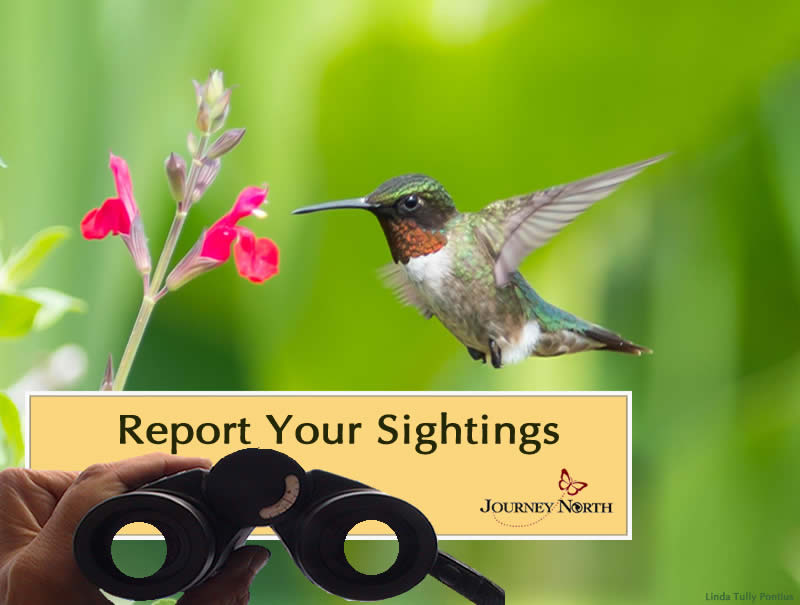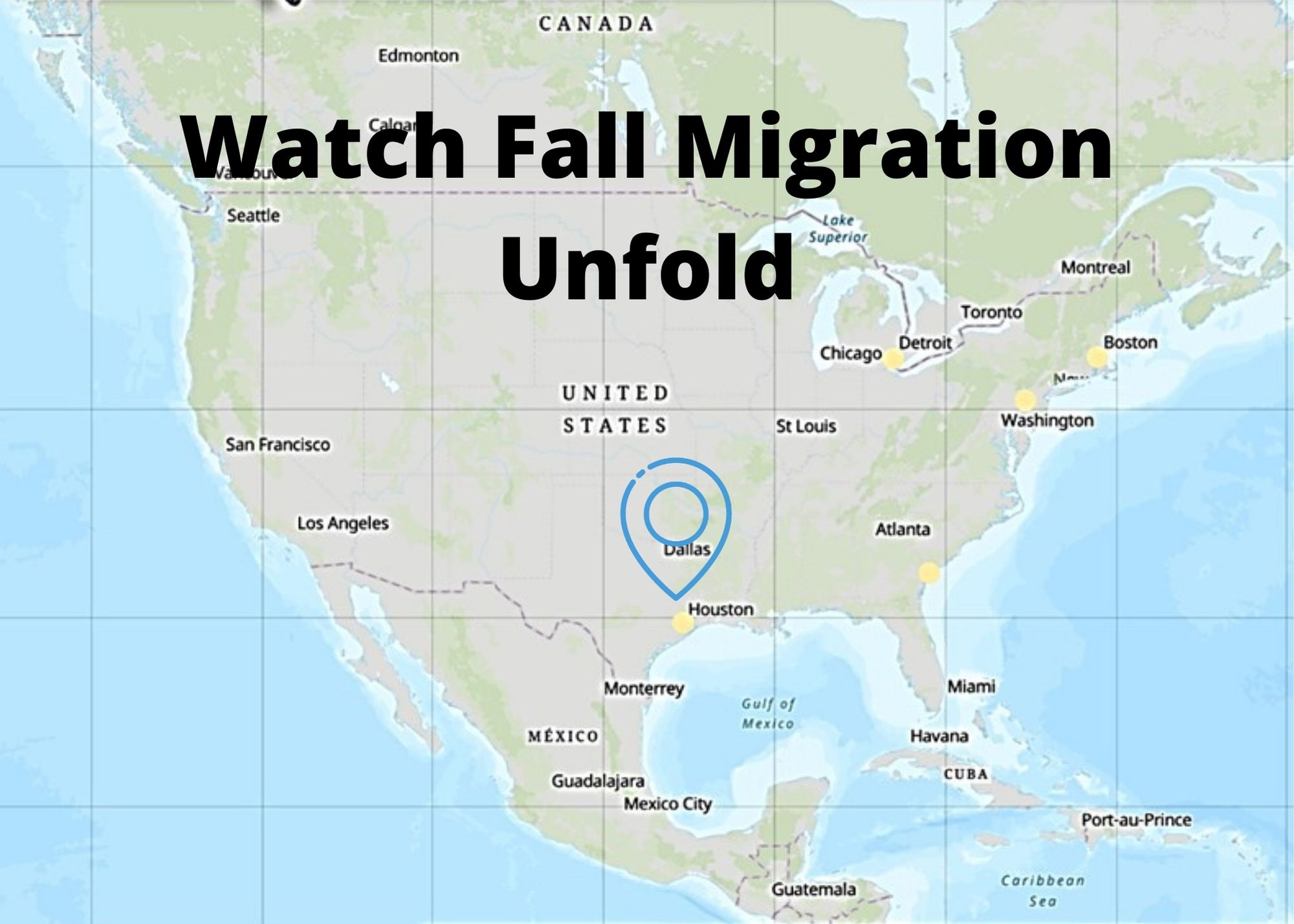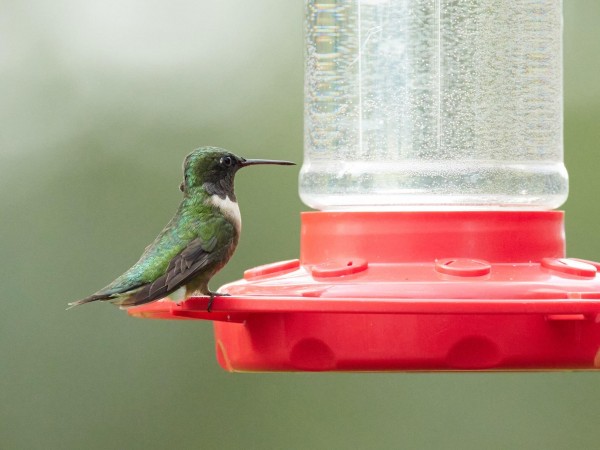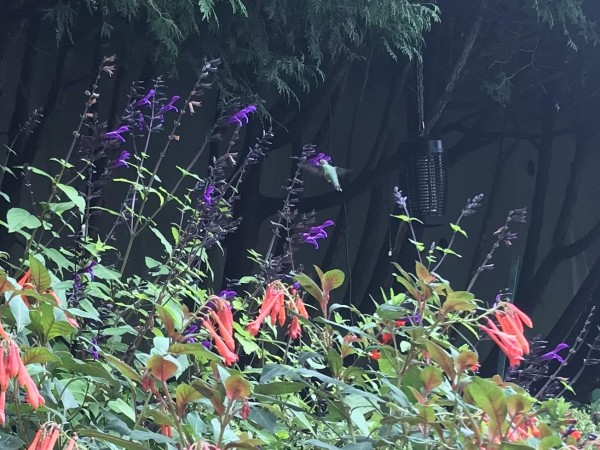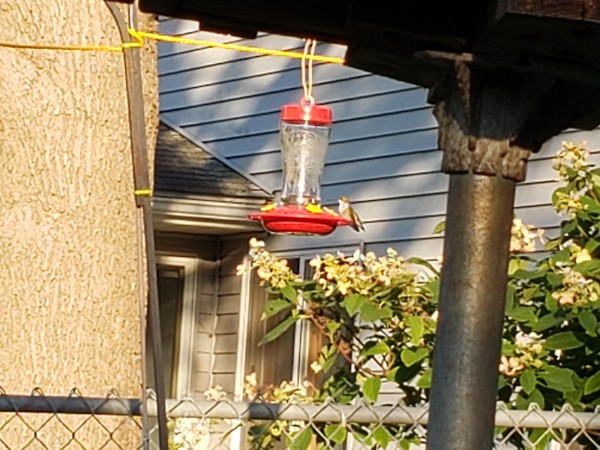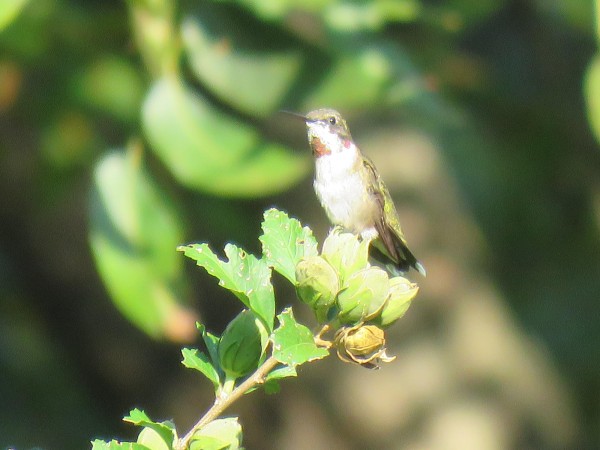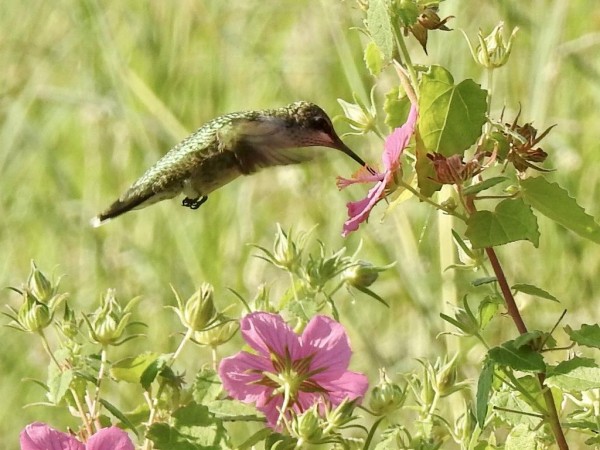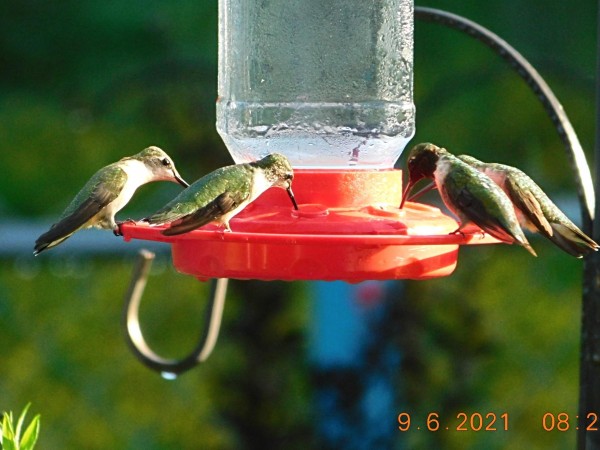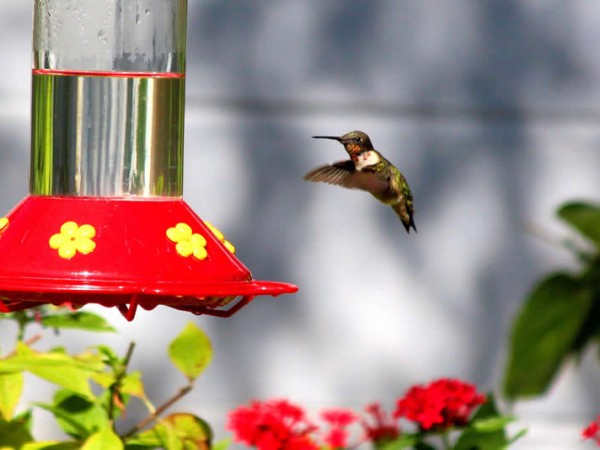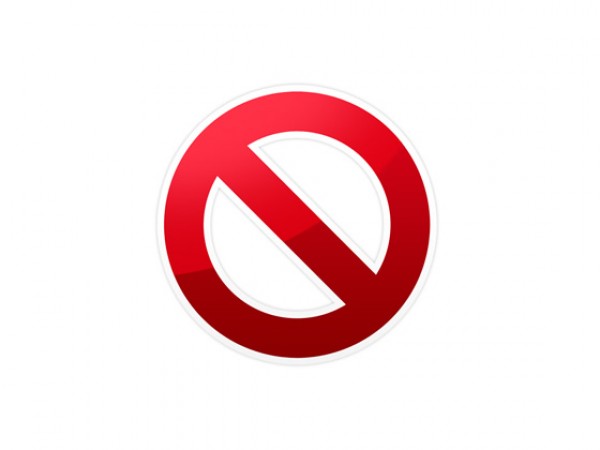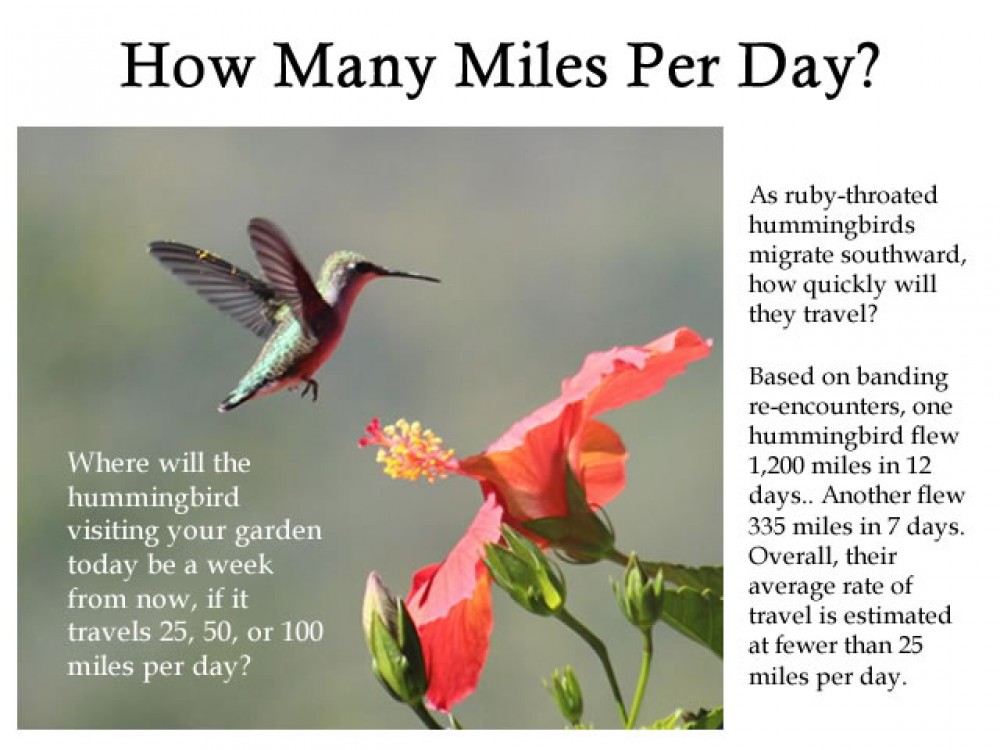Heading South
Hummingbirds are on the move and busy fueling up for their long journey. Keep reporting your observations!
On the Move
Fall officially begins next week. Hummingbirds at feeders farther north are likely migrants passing through or resident juveniles and adult females that have yet to leave. Most adult males have already left and as temperatures fall and days get shorter, resident juveniles and females will also migrate south.
Judith in Westminster, MD: "The last time we saw our three adult resident males was the day after the remnants of Hurricane Ida rolled through. We saw them at the feeders in the morning and haven't seen them since. While photographing the birds today, this adult male showed up at one of the feeders. He spent several minutes at the feeder taking long drinks before being chased off by a juvenile male." (09/07/2021)
Lisa in Ste-Julie, QC:"1 or 2 visitors seen today nectaring at the annuals.These visitors often sit and rest in the trees or on power lines above the garden, something I didn’t notice during the summer - so am guessing they are transiting from further north." (09/07/2021)
Dianne in Caledon, ON: "We have only two [Ruby-throated Hummingbird] females left. Two days ago, I had a male on my hummingbird feeder all day. For the last week before they left, they were nectaring on the many flowers in our garden far more than they were using the feeders. I was surprised at how much they nectared on my Zinnias. They also loved Crocosmia, Morning Glory, Fuchsias, Larkspur, Buddlejas and Salvias." (09/08/2021)
Mike in Saint Paul, MN: "9 female/juvenile Ruby-throated hummers were on frantic feeding frenzy today. The hummers were almost in constant motion, feeding and fighting most of the day. Some took very long nectar sessions at feeders. And lots of nectaring from salvias, cigar flowers, agastache and honeysuckle. I imagine this group or many of them will head south in the next couple days." (09/12/2021)
Numbers Growing Farther South
Farther south in the U.S., hummingbird numbers are beginning to swell as short-term migratory residents and long-term summer residents overlap.
William in El Prado, NM: "Solitary, migrating Calliope Hummingbird female joins six summer resident Black-chinned Hummingbird females at nectar feeders. Black-chinned females are 2021 juveniles and/or adults fattening up for their impending migration." (09/04/2021)
Candice in Piedmont, SC: "I've graduated to 2 feeders in front and 2 in back. This young male has claimed one in the back, fending off at least 4 others, male and female. An adult male and a couple of females vying for the front one's." (09/06/2021)
Vivian in Desdemona, TX: "There are probably 30 hummingbirds here, mostly Black-chinned but also several Ruby-throats that are migrating through on their way to the Texas coast. I have feeders which they frequent, but they also spend lots of time at Turk’s cap, flame acanthus, zinnias, and rock rose, pictured here." (09/09/2021)
Kathy in Morris Chapel, TN: "I still have 50-100 Ruby-throated Hummingbirds. I have approximately 10 adult males, three of which are banded." (09/09/2021)
Keep Reporting and Help Hummingbirds
Keep reporting and keep a tally of hummingbirds seen by your feeder and nectaring from flowers. Include the species of hummingbird observed. Try to report your hummingbird observations at least once a week now that we are moving into the fall migration season.
Migration is a perilous time of life for hummingbirds. Below are a few steps you can take to help them on their journey.
- Continue to maintain your hummingbird feeders until temperatures drop below freezing. Please remember our message of NO RED DYE. The last thing we want to do is to harm hummingbirds. Do not use red-dye solution or add red food coloring in your hummingbird feeders.
- Continue to nurture your pollinator gardens. Next year, consider planting brightly-colored native flowers with long tube shapes. Remember hummingbirds are attracted to the bright colors not smell. Follow this link to just a few planting suggestions: Photo Gallery of Fall Nectar Sources.


